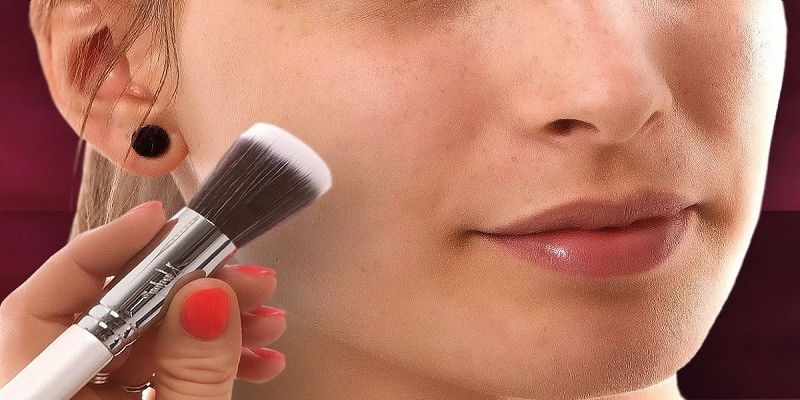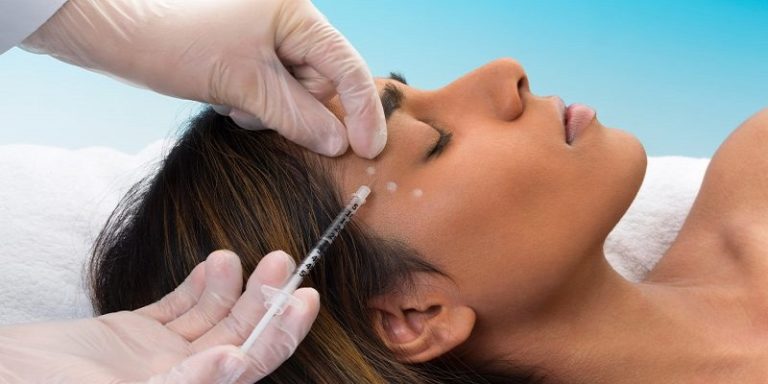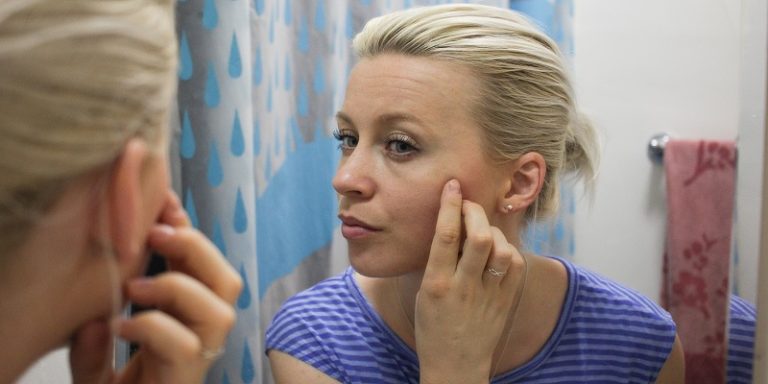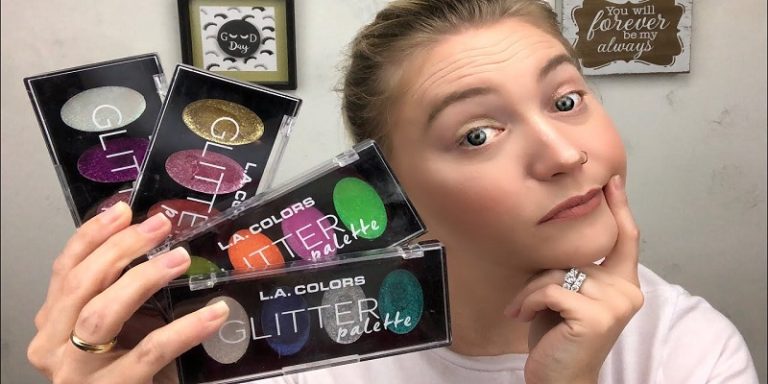How To Know If Your Makeup Has Asbestos?
Last Updated on June 18, 2025 by Jaclyn A. Neeley
To know if your makeup has asbestos, check the ingredient list and avoid products with talc. Asbestos can sometimes be found in talc, which is a common ingredient in many makeup products.
Makeup is often seen as a harmless indulgence and a daily routine that enhances one’s beauty. However, makeup products may pose several health risks, including cancer and skin irritation, due to their ingredients. One such ingredient is talc, a mineral that gives makeup a silky texture. Although talc is considered safe, it can sometimes be contaminated with asbestos, a carcinogenic material linked to lung cancer and mesothelioma. Asbestos is a naturally occurring mineral found in rocks, and when inhaled, it can accumulate in the lungs and cause illnesses. The safest way to avoid products with asbestos is to read the ingredient label and stay away from talc-based cosmetics. In this article, we will discuss how to protect yourself from asbestos in makeup and find safe alternatives.
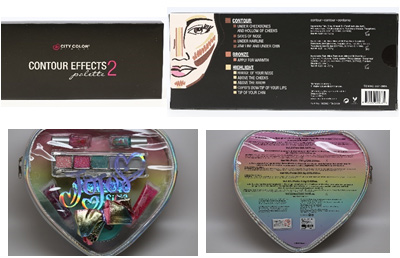
Credit: www.fda.gov
Understanding Asbestos And Its Health Risks
Asbestos is a naturally occurring group of silicate minerals, often found in soil and rocks. Due to its durability and resistance to heat, asbestos had been extensively used in building materials for several decades until its prohibition. However, its widespread use has led to significant health concerns.
What Is Asbestos?
Asbestos is a group of six minerals that were extensively used in various industries due to their exceptional durability, strength, and heat resistance. They can be found in building materials like flooring, roofing, insulation, and cement pipes.
How Does Asbestos Exposure Occur?
Asbestos exposure occurs when microscopic fibers become airborne and inhaled, resulting in various respiratory illnesses. Exposure can happen when asbestos-containing materials are disturbed during renovation, demolition, or maintenance of buildings. Additionally, the families of asbestos workers may also be at risk of exposure from second-hand exposure.
What Are The Health Risks Associated With Asbestos Exposure?
Asbestos exposure can result in several serious and potentially life-threatening diseases, including:
- Asbestosis: a chronic lung disease that causes shortness of breath, coughing and scarring of lung tissues.
- Lung cancer: smoking combined with asbestos exposure increases the risk of lung cancer, which can be fatal.
- Mesothelioma: a type of cancer that affects the membranes lining the lungs and chest cavity.
The symptoms of these diseases can take years to develop and can often be misdiagnosed. Therefore, it’s crucial to prevent exposure to asbestos by using protective equipment and following safety regulations.
Overall, understanding asbestos and its harmful effects is essential in both preventing exposure and seeking treatment in case of illness.
Sources Of Asbestos In Makeup
Beauty products have always been a part of our daily routine. With so many options available, we meticulously select what goes into our makeup kit, but have you ever thought about what goes into your cosmetic products? The last thing one would expect to find is the deadly carcinogen asbestos, but it’s shockingly present in certain makeup products.
This article aims to educate you on how to identify asbestos in your makeup. Here we discuss “sources of asbestos in makeup,” focusing on asbestos-contaminated talc, asbestos in other makeup ingredients, and the dangers of unregulated cosmetics.
Asbestos-Contaminated Talc
Talc is a naturally occurring mineral composed mainly of magnesium, silicon, and oxygen. Many cosmetics use talc as it’s a cheap, absorbent, and gives a silky-smooth finish. However, talc deposits are often mined together with asbestos, which can lead to accidental contamination.
- Loose powders like blush, eyeshadow, and foundation.
- Pressed powders like pressed powders, compacts, and bronzers.
- Mineral makeup products.
Asbestos In Other Makeup Ingredients
While asbestos-contaminated talc is the primary source of asbestos in makeup, some other ingredients may contain asbestos as well.
- Mica: sometimes, mica sourced from mines near asbestos deposits can accidentally contain asbestos fibres. It’s commonly used as a shimmering agent in eye shadow, lipstick, and highlighters.
- Vermiculite: this mineral is often used in cosmetics for its absorbent properties in products such as pressed powders and talcum powder.
- Kaolin: kaolin is a soft, white clay that’s used in foundations, concealers, and face powders to help absorb oil and improve consistency. It can often be found naturally contaminated with asbestos.
The Dangers Of Unregulated Cosmetics
Cosmetics containing asbestos can result in several health issues, including lung cancer and mesothelioma. The problem lies in the lack of regulatory bodies responsible for monitoring cosmetic products. In some countries, cosmetics are not regulated, and in others, the government lacks adequate resources to monitor every cosmetic product.
This is why it’s crucial to always read the ingredient list carefully. Always look for reputable brands and seek third-party certifications for the products you buy.
While it’s impossible to entirely avoid asbestos in makeup products, by being mindful and aware, we can reduce the risk of exposure. Do your research, read product labels, and choose your products wisely. Remember, your health is your priority, and you deserve to feel beautiful without compromising it.
Tips For Identifying Asbestos In Your Makeup
Asbestos, a carcinogenic mineral, is commonly used in various industries, including the cosmetic industry, due to its heat-resistant and insulating properties. If you use makeup regularly, it’s essential to know whether your cosmetic products contain asbestos or not.
Reading The Ingredients List And Looking For Keywords
Many cosmetic products mention the presence of asbestos in their ingredients list in a vague and confusing way. Typically, asbestos is disguised as talc or “fragrance” in these products. Additionally, sometimes cosmetic companies intentionally hide the presence of asbestos in their ingredients list, making it even more challenging to identify.
To detect asbestos in your cosmetic products, you need to search for keywords like “talc,” “asbestos-free,” or “fragrance-free. ” if the product contains talc, it should mention its purity level. If the product is asbestos-free, it should mention it clearly on the label.
Using At-Home Asbestos Test Kits
At-home asbestos test kits are an affordable and easy way to determine the presence of asbestos in your makeup. These kits come with detailed instructions and all the necessary tools you need to collect a sample from your cosmetic product.
After collecting the sample, you can send it to a lab to test for asbestos.
Seeking Professional Asbestos Testing Services
If you’re concerned about asbestos in your makeup, you may want to seek professional asbestos testing services. These services can accurately detect the presence of asbestos in your cosmetic products. The experts use advanced testing methods and equipment to ensure accurate detection results.
Understanding Labeling And Certification Standards In Cosmetic Products
It’s crucial to understand the labeling and certification standards of cosmetic products before purchasing them. Products that meet the certification standards have been tested and approved for safe use by authorized agencies.
Look for authentication seals, such as the fda, usda, or epa mark or the “cruelty-free” green bunny logo. These marks ensure that the product meets safety standards and has been thoroughly tested for harmful chemicals, including asbestos.
Identifying asbestos in your makeup can be challenging, but these tips can help you detect asbestos in your cosmetic products. Remember to read the ingredient list, use at-home asbestos test kits or seek professional asbestos testing services, and look for certification standards in cosmetic products.
By following these tips, you can protect yourself from the harmful effects of asbestos in your makeup.
Frequently Asked Questions Of How To Know If Your Makeup Has Asbestos?
1. What Is Asbestos, And Why Is It Used In Makeup?
Asbestos is a naturally occurring mineral fiber used in some cosmetic products to add texture and color. Its use is prohibited in many countries due to its links with cancer and other diseases.
2. How Do I Know If My Makeup Has Asbestos?
To check if your makeup contains asbestos, check the ingredients list. If it includes talc, which is often contaminated with asbestos, there’s a risk. Also, look for certifications, such as “asbestos-free” or “talc-free.
3. Are All Makeup Products Tested For Asbestos?
No, not all makeup products are tested for asbestos. However, certain cosmetic companies subject their products to third-party testing to ensure they’re free of hazardous substances such as asbestos.
4. What Are The Health Effects Of Asbestos In Makeup?
Inhaling asbestos fibers can cause lung diseases such as mesothelioma and lung cancer. Asbestos in makeup may also result in skin irritation, rashes, and other allergic reactions.
5. Should I Stop Using Makeup Containing Talc?
It’s recommended that you avoid using makeup products that contain talc due to the risk of asbestos contamination. However, some manufacturers produce talc-based cosmetics that are certified as asbestos-free.
Conclusion
Checking the ingredients list before purchasing makeup products is crucial to avoid potential health risks associated with asbestos exposure. It is also important to be wary of any product that claims to be “natural” or “organic,” as these labels do not necessarily guarantee the absence of asbestos.
Instead, opt for products that have been certified by reputable organizations and manufacturers that prioritize safety and transparency. Additionally, it is always a good idea to regularly monitor health symptoms and consult a doctor if any concerning issues arise. By prioritizing safety and being diligent in checking for harmful ingredients, we can all make informed decisions and protect ourselves from potential harm.

